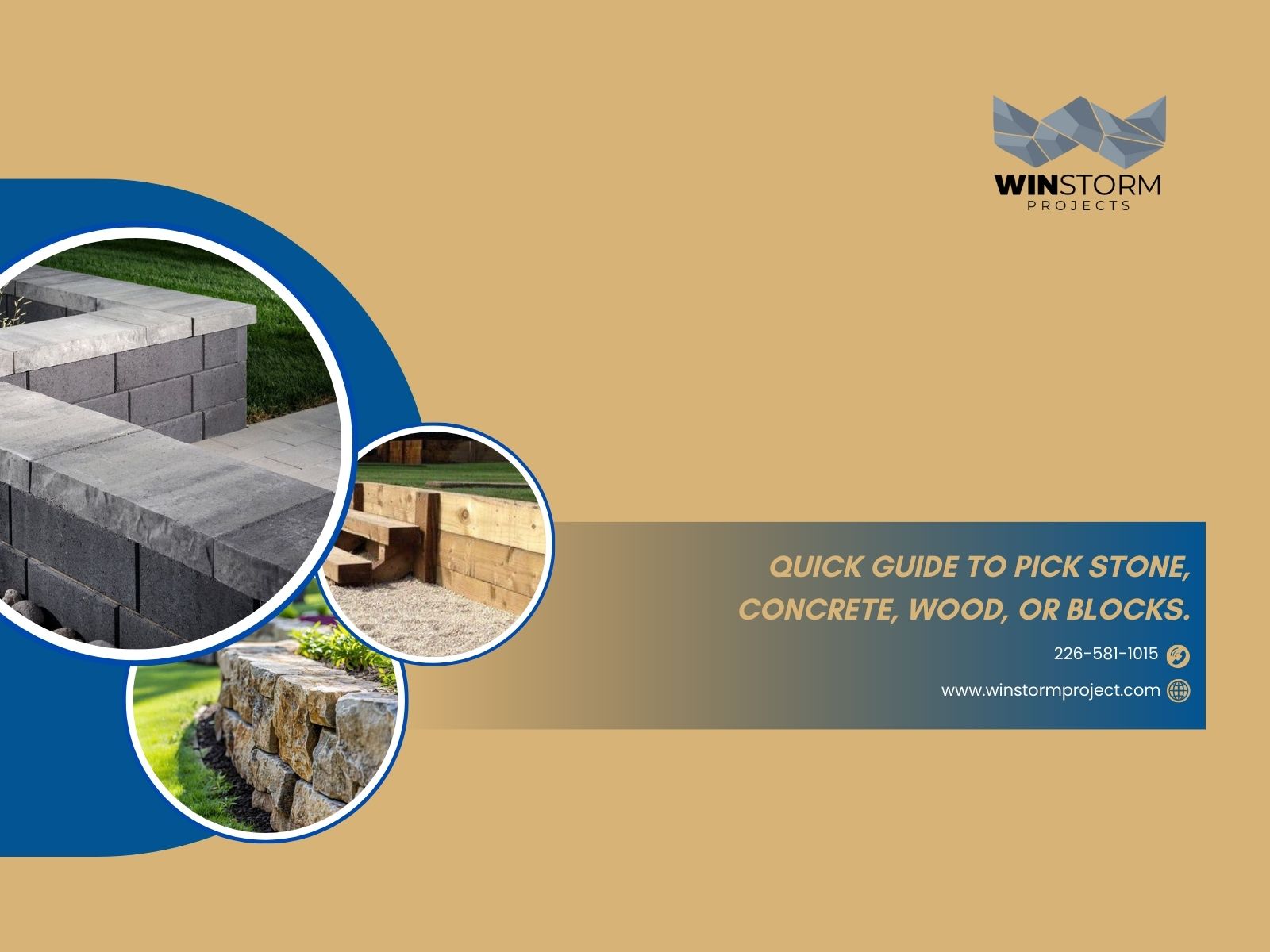Retaining walls serve a dual purpose in landscaping: they enhance outdoor aesthetics while preventing soil erosion. Choosing the right material is crucial for ensuring longevity, stability, and a design that complements your landscape.
From durable concrete to natural stone and budget-friendly timber, each material has distinct advantages. Weather resistance, cost, and maintenance requirements all play a role in determining the best option for your project. In this guide, we’ll explore the most common materials used for retaining walls and help you decide which suits your needs best.
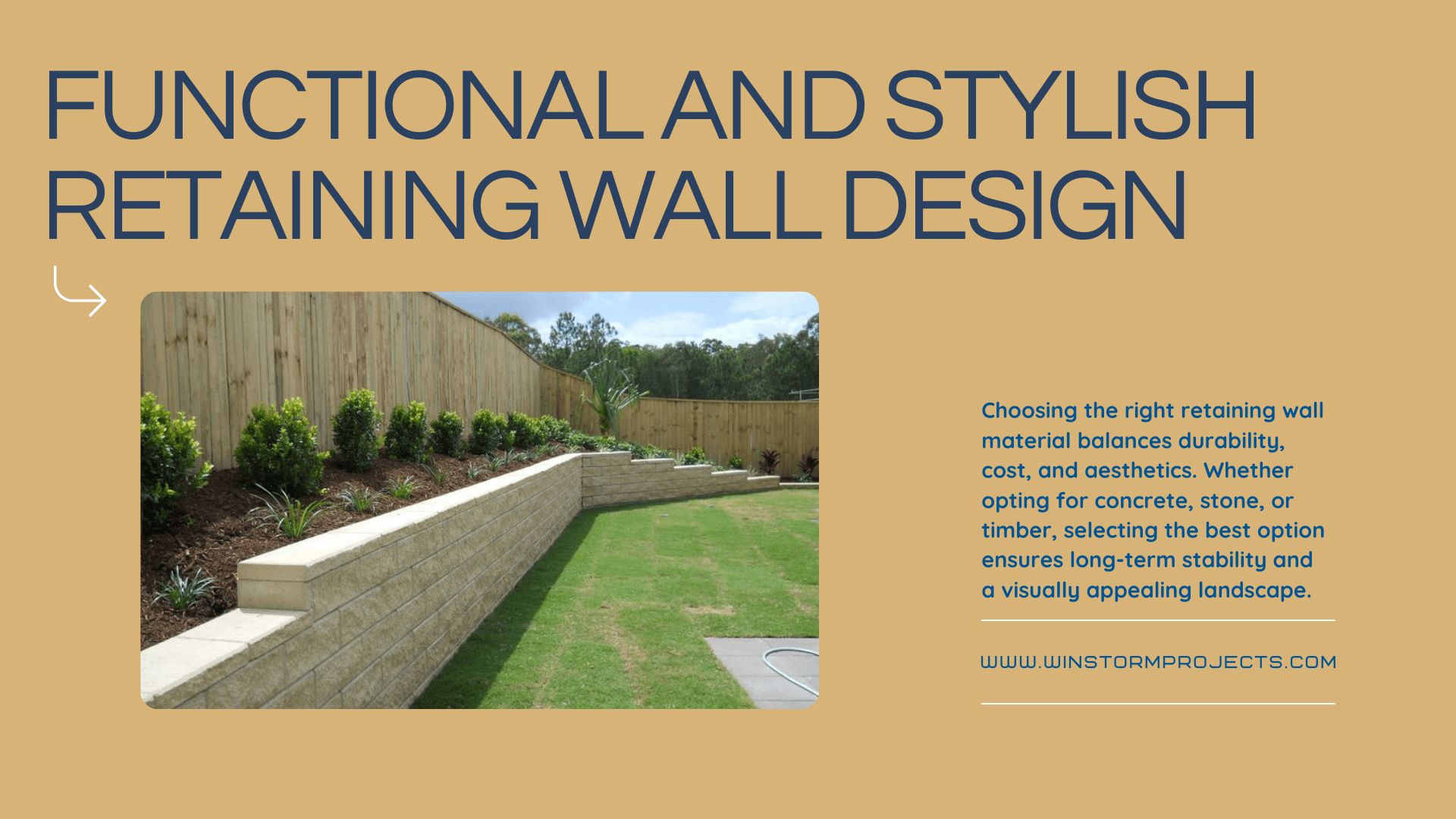
Overview of Retaining Wall Materials
Each material used in retaining walls has unique benefits and applications. Understanding their properties helps you make an informed choice.
- Concrete Blocks: Durable and low-maintenance, concrete blocks are an economical choice that offers design flexibility.
- Natural Stone: Granite, limestone, and other natural stones provide a classic look and unmatched durability. Ideal for upscale landscaping, stone walls effectively combat soil erosion.
- Timber: A budget-friendly and easy-to-install option, timber retaining walls are great for residential landscaping. However, they require maintenance to prevent moisture damage and pest infestations.
Proper material selection and drainage integration are essential for long-lasting, structurally sound retaining walls.
Types of Retaining Wall Materials
Concrete
Concrete retaining walls are known for their strength, affordability, and adaptability. With various finishing options, they fit seamlessly into modern landscapes. While concrete may develop cracks over time, proper drainage mitigates this risk. Reinforced concrete walls offer extra durability, making them ideal for large-scale projects and urban settings.
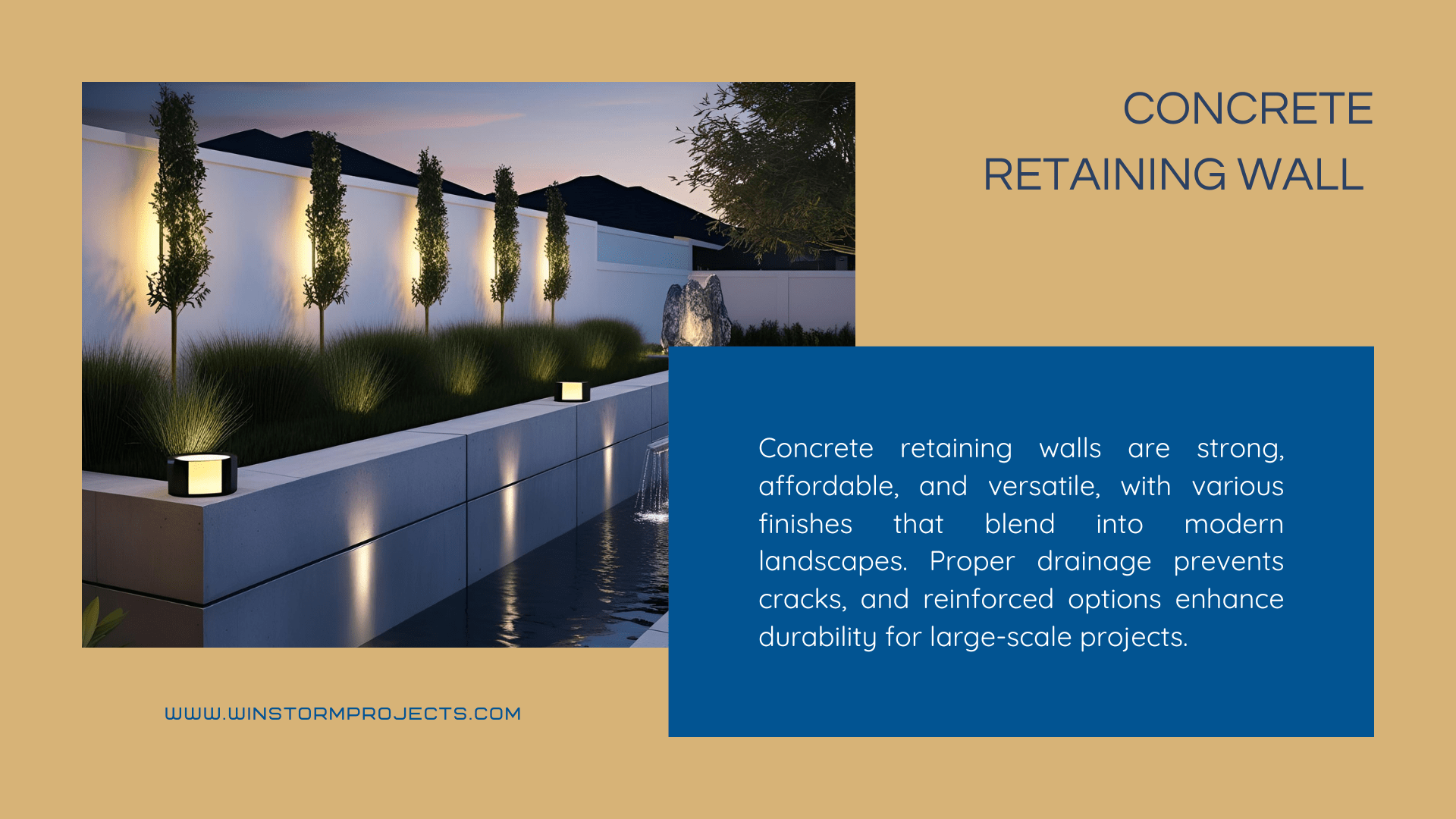
Natural Stone
Stone retaining walls exude elegance and provide exceptional durability. Granite, limestone, and other natural stones require skilled installation but offer long-term stability with minimal maintenance. Though they come with a higher upfront cost, they are an excellent choice for those prioritizing aesthetics and longevity.
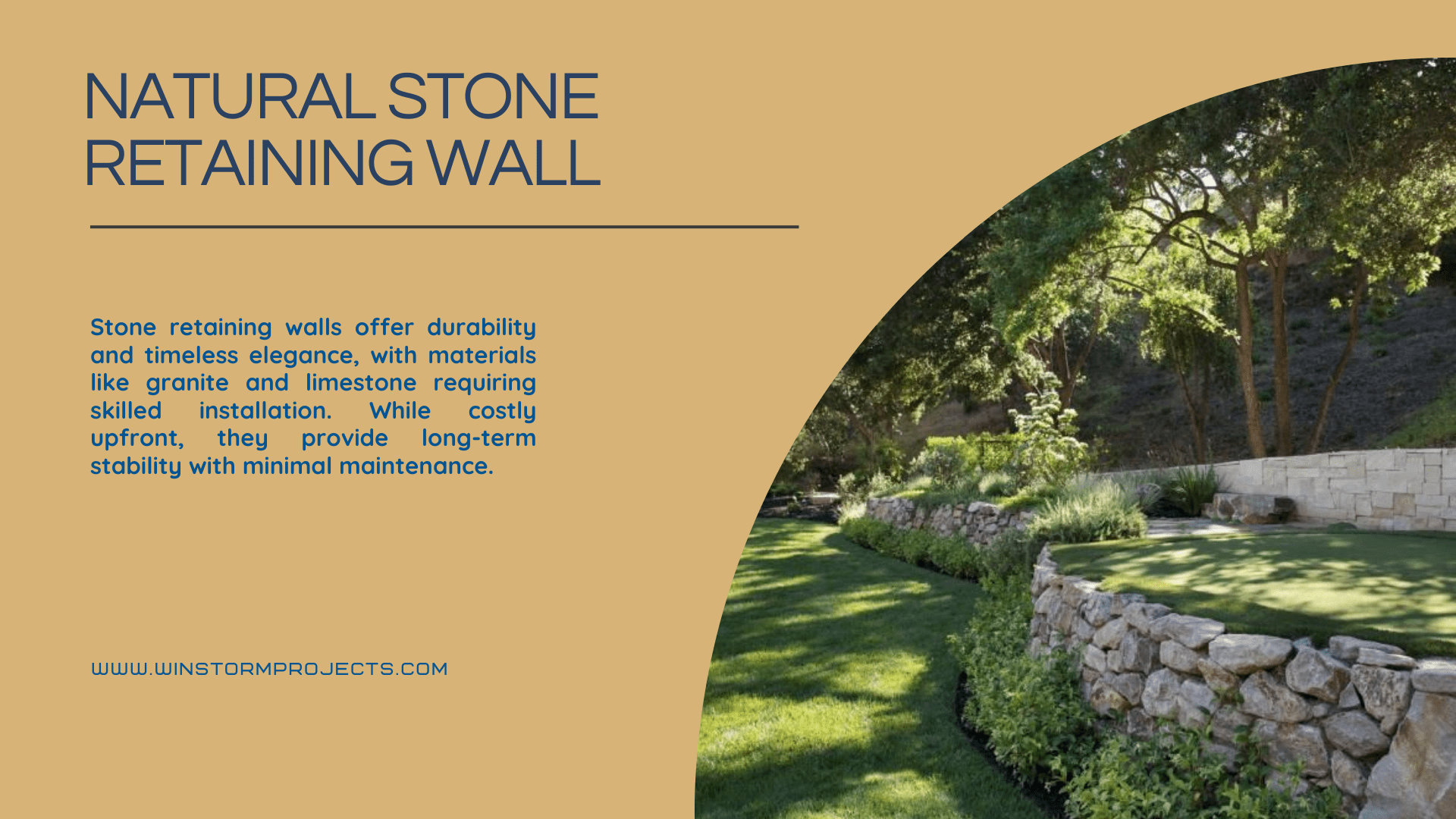
Timber
Timber is an affordable and visually appealing option, particularly for smaller gardens. Quick installation makes it attractive for homeowners, though its susceptibility to moisture and termites means it has a shorter lifespan compared to concrete or stone. Applying protective sealing can extend its durability.
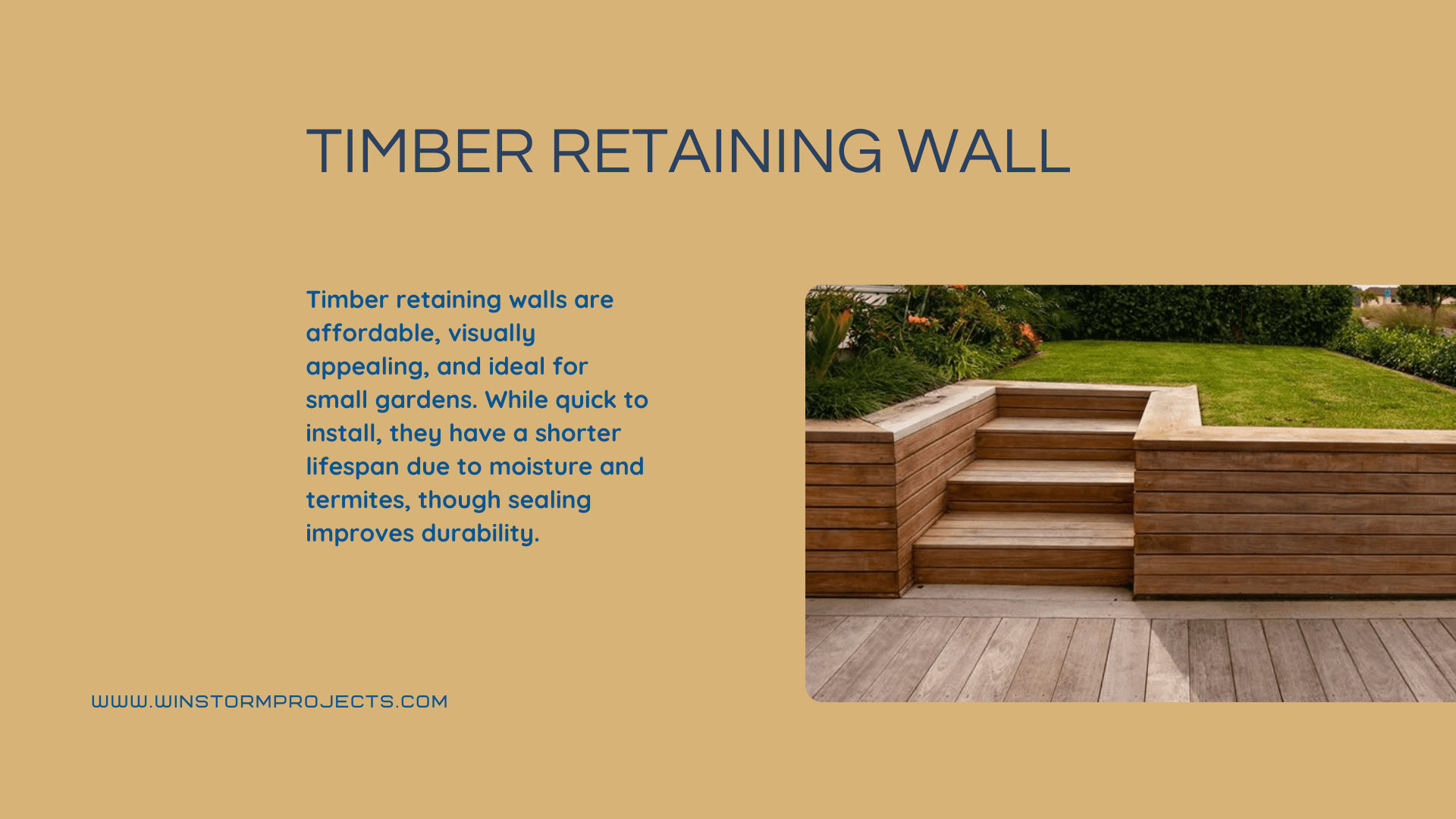
Concrete Blocks
Concrete block retaining walls provide a versatile and sturdy solution. Easy to install and weather-resistant, they are well-suited for various climates, including Ontario’s challenging conditions. Proper drainage integration ensures stability and prevents structural failure.
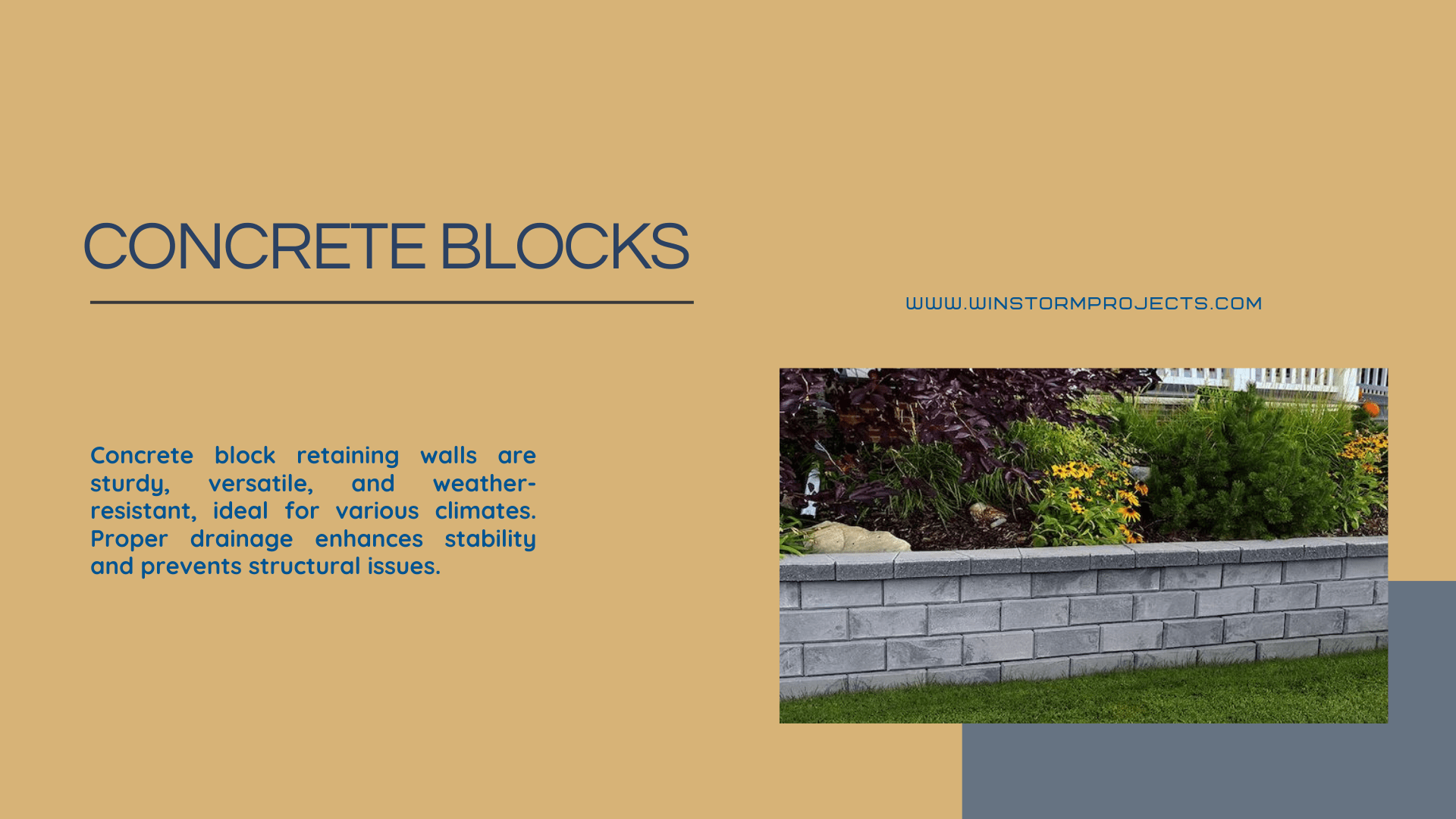
Factors to Consider When Choosing Materials
Durability & Weather Resistance
Your chosen material must withstand local weather conditions. Concrete is highly durable, while stone offers natural strength. Timber, though affordable, requires regular maintenance.
Cost vs. Long-Term Investment
While concrete and stone walls may have higher initial costs, they offer superior longevity, reducing long-term maintenance expenses. Timber is a budget-friendly option, but it may need replacement sooner.
Aesthetic Appeal & Landscaping Fit
Materials should complement your outdoor design. Stone adds timeless elegance, while concrete can be styled for a contemporary look. Consider how the material blends with your existing landscape.
Drainage & Soil Stability
Proper drainage is essential to prevent water buildup and structural damage. Incorporating perforated pipes and gravel ensures effective water flow, maintaining wall integrity.
Which Retaining Wall Material is Best for Your Needs?
Concrete Retaining Walls
Best for: Durability, low maintenance, and modern aesthetics. Concrete walls handle harsh weather conditions well, making them a strong long-term investment.
Stone Retaining Walls
Best for: Aesthetic appeal, high-end properties, and erosion control. Natural stone walls are visually striking and exceptionally strong, though they come with higher costs.
Timber Retaining Walls
Best for: Budget-conscious homeowners and small landscaping projects. Timber is cost-effective but requires more maintenance and has a shorter lifespan.
Installation and Maintenance Considerations
Installation Tips:
- Choose materials based on durability and climate suitability.
- Ensure proper alignment to support soil effectively and prevent shifting.
- Integrate drainage solutions, like gravel and perforated pipes, to avoid water buildup.
Maintenance Practices:
- Inspect walls regularly for cracks or erosion.
- Clean drainage systems to prevent blockages.
- Repair damage promptly to avoid costly structural issues.
Cost Considerations for Retaining Walls
The cost of building a retaining wall depends on material choice, labour, and project complexity.
- DIY vs. Professional Installation: While a DIY approach can save on labour costs, professional installation ensures proper drainage and structural integrity, reducing the risk of long-term repairs.
- Maintenance Costs: Concrete and stone require less maintenance than timber, which may need sealing or replacement over time.
Conclusion
A well-constructed retaining wall enhances your landscape while ensuring soil stability. Choosing the right material depends on durability, cost, and aesthetic preferences. Whether you opt for the strength of concrete, the beauty of natural stone, or the affordability of timber, proper installation and maintenance are key to a lasting investment.
If you’re planning a retaining wall project in Guelph, Kitchener, or surrounding areas, Winstorm provides expert guidance and high-quality solutions tailored to your needs.
Frequently Asked Questions
What materials are best for retaining walls?
Common options include concrete, natural stone (granite and limestone), and timber. Each has advantages in terms of cost, durability, and aesthetics.
Why is material selection important?
The right material ensures longevity, reduces maintenance, and complements your landscape while withstanding local weather conditions.
How do concrete and timber walls compare?
Concrete is long-lasting and low-maintenance, but has higher upfront costs. Timber is more affordable but requires frequent maintenance and replacement.
What are typical costs for building a retaining wall?
Costs vary based on material, labour, permits, and complexity. While DIY projects save on labour, professional installation ensures better results.
Which material works best for sloped yards?
Concrete blocks and natural stone offer the best stability for sloped areas, preventing soil erosion and ensuring long-term durability.

